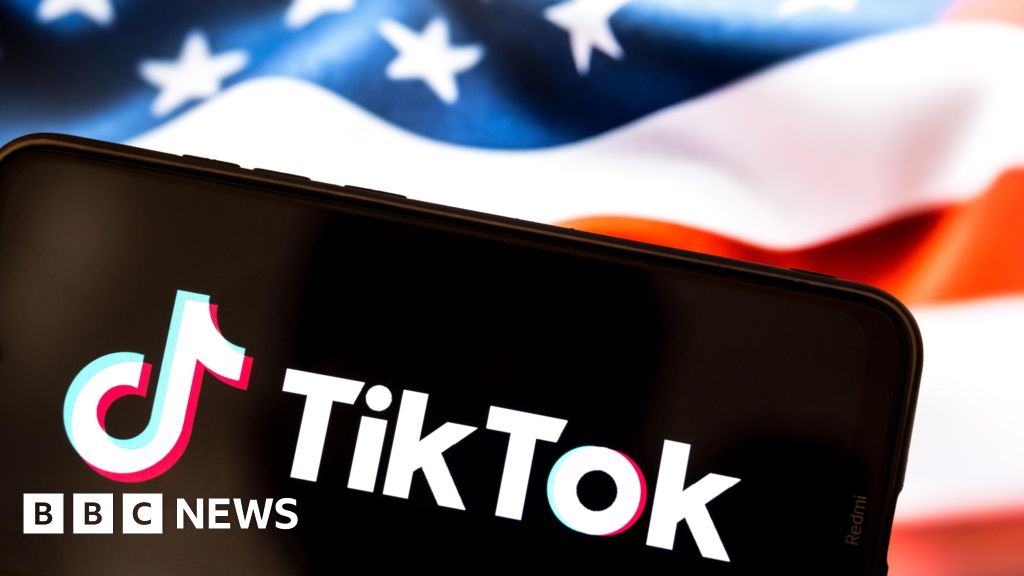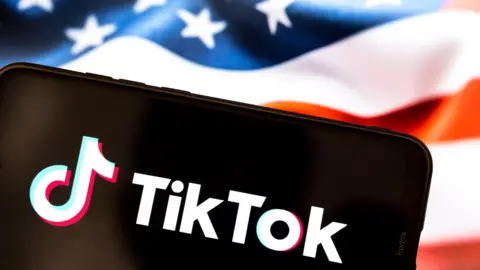Business
Interest rates could remain at 4% until 2026, economists say

UK interest rates are set to be held at 4% until 2026 as lingering concerns about the economy prompt policymakers to act cautiously, economists have said.
The Bank of England’s Monetary Policy Committee (MPC) will announce its latest decision on Thursday.
The central bank is widely expected to keep rates at 4% after cutting them from 4.25% in August.
Economists believe the MPC may avoid cutting rates at meetings in November and December, meaning the figure could be kept on hold until February.
This would be a setback for mortgage holders with millions still expected to refinance on to higher rates in the coming years.
Thomas Pugh, chief economist for auditing firm RSM UK, said: “It’s all but guaranteed that the Bank of England will hold interest rates at 4% at its meeting on Thursday.
“The committee will stick to its gradual and cautious guidance, as it continues to try to balance rising inflation with a weakening labour market.”
UK Consumer Prices Index (CPI) inflation rose to 3.8% in July, from 3.6% in June, meaning it remained at the highest level since January 2024.
This was largely driven by food and drink prices rising, while overall wage inflation has remained at 5%, according to the latest data from the Office for National Statistics.
Interest rates are used by the MPC to control inflation and bring it down to the 2% target.
The UK labour market has been stagnating with the unemployment rate remaining at a four-year high and job vacancies continuing to decline.
Philip Shaw, an economist for Investec, said he was expecting rates to be held at 4% until the end of the year, with the next cut in February.
He said recent economic data will be “unlikely to disperse the committee’s collective doubts over whether the inflationary coast is clear to resume easing” monetary policy by November.
Rob Wood and Elliott Jordan-Doak, economists for Pantheon Macroeconomics, said recent remarks from the Bank’s governor Andrew Bailey indicated he was happy with the financial markets pricing in only a 40% chance of another rate cut this year.
“The late Budget will likely also encourage the MPC to wait until December at least before considering another cut,” they said.
“We expect little change to the MPC’s guidance from August, given the hawkish dataflow and MPC members’ comments suggest little reason or desire to change their position from early August.”
In August, policymakers emphasised future rate cuts will need to be made “gradually and carefully” amid uncertainty about the economic outlook.
Chancellor Rachel Reeves is due to deliver her autumn Budget on November 26, and is widely expected to raise taxes to balance the books.
Business
TikTok owner signs join venture agreements to avoid US ban

Peter Hoskins,Business reporterand
Lily Jamali,North America technology correspondent
TikTok’s Chinese owner ByteDance has signed binding agreements with US and global investors for the majority of its business in America, TikTok’s boss told employees on Thursday.
Half of the joint venture will be owned by a group of investors, including Oracle, Silver Lake and the Emirati investment firm MGX, according to a memo sent by chief executive Shou Zi Chew.
The deal, which is set to close on 22 January, would end years of efforts by Washington to force ByteDance to sell its US operations over national security concerns.
It is in line with a deal unveiled in September, when US President Donald Trump delayed the enforcement of a law that would ban the app unless it was sold.
In the memo, TikTok said the deal will enable “over 170 million Americans to continue discovering a world of endless possibilities as part of a vital global community”.
Under the agreement, ByteDance will retain 19.9% of the business, while Oracle, Silver Lake and Abu Dhabi-based MGX will hold 15% each.
Another 30.1% will be held by affiliates of existing ByteDance investors, according to the memo.
The White House previously said that Oracle, which was co-founded by Trump supporter Larry Ellison, will license TikTok’s recommendation algorithm as part of the deal.
The deal comes after a series of delays.
In April 2024, during President Joe Biden’s administration, the US Congress passed a law to ban the app over national security concerns, unless it was sold.
The law was set to go into effect on 20 January 2025 but was pushed back multiple times by Trump, while his administration worked out a deal to transfer ownership.
Trump said in September that he had spoken on the phone to China’s President Xi Jinping, who he said had given the deal the go ahead.
The platform’s future remained unclear after the leaders met face to face in October.
The app’s fate was clouded by ongoing tensions between the two nations on trade and other matters.
“TikTok has become a bargaining chip in the wider US-China relationship,” said Alvin Graylin, a lecturer at the Massachusetts Institute of Technology.
“With recent softening tensions, Beijing’s sign off on the structure and algorithm licensing now looks less like capitulation and more like calibrated de-escalation, letting both capitals claim a win at home.”
 NurPhoto via Getty Images
NurPhoto via Getty ImagesThe White House referred the BBC to TikTok when contacted for comment.
Oracle and Silver Lake declined to comment. The BBC has contacted MGX for comment.
The deal drew critiques from Senate Democrat Ron Wyden of Oregon, who said it wouldn’t do “a thing to protect the privacy of American user”.
Under the terms, TikTok’s recommendation algorithm is set to be retrained on American user data to ensure feeds are free from outside manipulation.
“It’s unclear that it will even put TikTok’s algorithm in safer hands,” said Sen Wyden.
He opposed the 2024 law, and was among the US lawmakers who lobbied to extend the TikTok deadline in January in a bid to give Congress more time to mitigate threats from China.
Some users also expressed caution at the prospect of new investors.
Small business owner Tiffany Cianci, who has more than 300,000 followers and nearly four million likes on the platform, said she hopes the incoming investors will maintain the same user experience for entrepreneurs like her.
“I hope small business owners are protected,” Ms Cianci said.
TikTok has said that more than seven million small businesses market their products and services on TikTok in the US.
“I reserve judgement on whether or not we have saved the app for those small business,” she added.
Ms Cianci said she chose TikTok for promotion because the platform offers profit-sharing on terms that are more favourable than what competitors like Meta offer.
Over the last year, Ms Cianci has been active in organising protests in Washington and on TikTok aimed at saving the app.
Business
Japan hikes interest rate to highest level since 1995 as inflation bites

Japan’s central bank has raised its main interest rate to the highest level in 30 years as the country faces a cost-of-living squeeze.
In a widely expected decision, the Bank of Japan’s policy board, led by governor Kazuo Ueda, increased its benchmark rate by a quarter of a percentage point to “around 0.75%” on Friday.
The move comes as new Prime Minister Sanae Takaichi is keen that inflation comes down but also needs the cost of government borrowing to be cheap.
It marks both the first time the BOJ has hiked rates since January and the first rise since both Takaichi and Ueda took up their current roles.
When a central bank raises interest rates it tends to have the effect of increasing the value of the country’s currency.
In Japan’s case, it has the potential of easing inflation as the yen’s low value versus other major currencies, like the US dollar and the euro, has pushed up the cost of imports, which in turn has helped to fuel inflation.
At the same time, higher interest rates push up government borrowing costs because when rates go up governments, like anyone else, have to pay more to borrow money.
Last year, Takaichi described the idea of a rate hike as “stupid” although she has not publicly criticised Ueda’s policies since she took office in October.
Still, Takaichi has made the fight against inflation a priority as rising costs have eroded support for her party, the LDP.
On Friday, official figures showed Japan’s inflation, excluding food and fuel, rose by 3% in November. That remains above the bank’s target rate of 2%.
But Shoki Omori, chief strategist at Mizuho in Tokyo, told the BBC that the interest rate rise will do little to ease inflation as it has already been priced in by currency markets and the yen remains relatively weak.
Most economists expect the BOJ to raise its benchmark interest rate once more next year to hit 1%.
It marks a major change in Japanese policy makers’ approach to interest rates.
“What we’re seeing is a historic shift after nearly three decades of long standing low rates in Japan,” said Julia Lee from Pacific FTSE Russell, part of the London Stock Exchange Group.
But Takaichi’s stance on monetary policy may make it harder for the bank to hike again, said Shigeto Nagai, head of Japan economics at Oxford Economics.
“The BoJ will need time, probably around six months, to monitor the impact of the rate hike on the real economy before it makes its final move,” he said.
The BOJ’s latest rate rise comes as other major central banks around the world are moving in the opposite direction – lowering the cost of borrowing.
On Thursday, the Bank of England cut its main interest rate to 3.75%, the lowest level since February 2023.
Last week, the US Federal Reserve lowered interest rates for the third time this year, even as internal divisions create uncertainty about additional cuts in the coming months.
The central bank said it was lowering the target for its key lending rate by 0.25 percentage points, putting it in a range of 3.50% to 3.75% – its lowest level in three years.
Business
Japan inflation holds steady ahead of BoJ rate decision – The Times of India

Japan’s inflation rate held steady in November, official data showed Friday ahead of the Bank of Japan’s monetary policy decision which could see central bankers raise interest rates to their highest level in 30 years.The hike would be the first since January and could potentially exacerbate turmoil in debt markets.Yields on Japanese government bonds have risen in recent weeks on worries about Prime Minister Sanae Takaichi’s budget discipline, while the yen has weakened.The core consumer price index — which excludes volatile fresh food — rose three percent in November, the same rate as a month earlier, in line with market expectations.Takaichi, who formally took power in October, has promised to fight inflation as a major priority.Her government succeeded in getting parliament approval for an extra budget worth 18.3 trillion yen ($118 billion) this week to finance her massive stimulus package.She has long advocated for more government spending and easy monetary policy to spur growth.Since taking office, however, she has said monetary policy decisions should be left to the Bank of Japan (BoJ).The BoJ began hiking rates from below zero in March last year as figures signalled an end to the country’s “lost decades” of stagnation, with inflation surging.However, with worries about the global outlook and US tariffs growing, the bank paused its tightening measures at the start of 2025, with the last increase in January taking rates to their highest level in 17 years.The inflation figures for November showed rice prices up 37 percent year-on-year, the internal affairs ministry said. Rice prices have skyrocketed because of supply problems linked to a very hot summer in 2023 and panic-buying after a “megaquake” warning last year, amongst other factors.Japan’s economy contracted 0.6 percent in the third quarter, but BoJ governor Kazuo Ueda said last week that the impact of US tariffs was less than feared.“So far, US corporates have swallowed the burden of tariffs without fully passing (them) through to consumer prices,” Ueda told the Financial Times.At the same time, inflation has been above the BoJ’s target of two percent for some time.The majority of economists polled by Bloomberg expect the BoJ to raise its main rate from 0.5 percent to 0.75 percent, which would be the highest since 1995.
-

 Business5 days ago
Business5 days agoHitting The ‘High Notes’ In Ties: Nepal Set To Lift Ban On Indian Bills Above ₹100
-

 Politics1 week ago
Politics1 week agoTrump launches gold card programme for expedited visas with a $1m price tag
-

 Business1 week ago
Business1 week agoRivian turns to AI, autonomy to woo investors as EV sales stall
-

 Fashion1 week ago
Fashion1 week agoTommy Hilfiger appoints Sergio Pérez as global menswear ambassador
-

 Sports1 week ago
Sports1 week agoPolice detain Michigan head football coach Sherrone Moore after firing, salacious details emerge: report
-

 Business1 week ago
Business1 week agoCoca-Cola taps COO Henrique Braun to replace James Quincey as CEO in 2026
-

 Sports1 week ago
Sports1 week agoU.S. House passes bill to combat stadium drones
-

 Tech1 week ago
Tech1 week agoGoogle DeepMind partners with UK government to deliver AI | Computer Weekly






